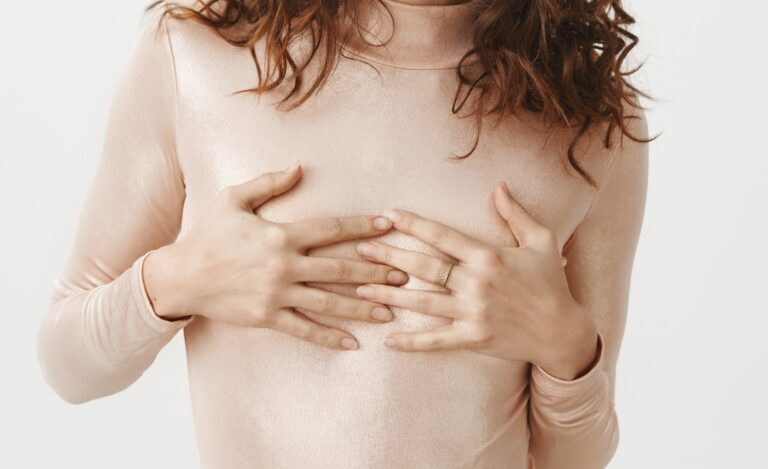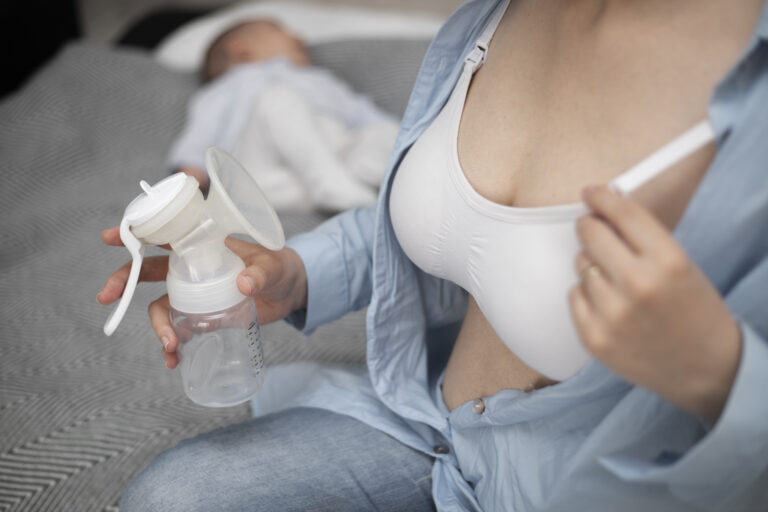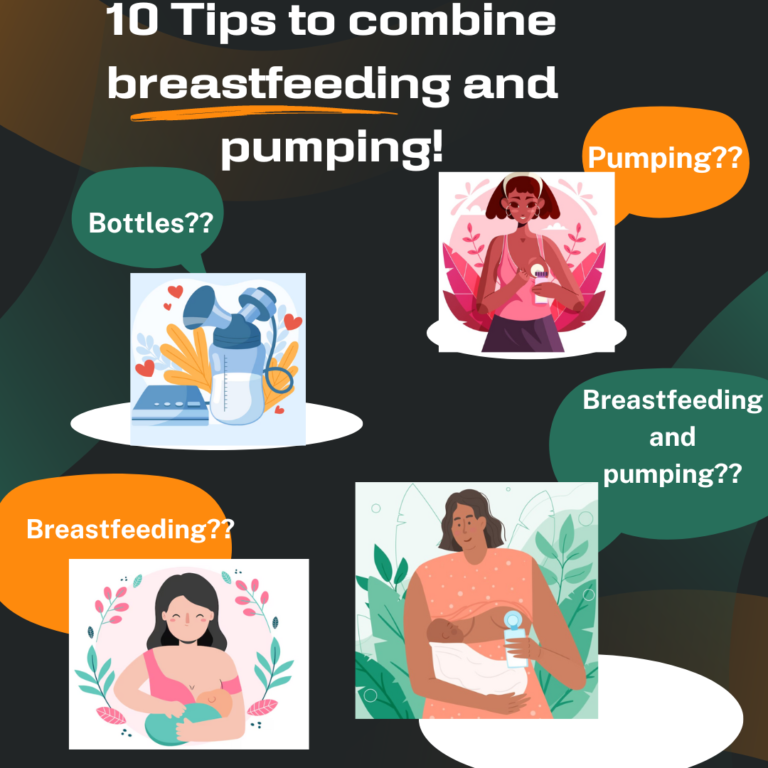The Surprising Causes Behind Dry, Cracked Nipples : Is it Nipple Fissures

Breastfeeding is a remarkable and bonding experience for both mother and baby. However, for some mothers, the journey can be marred by a common yet painful issue: cracked nipples. In this comprehensive article, we aim to shed light on nipple fissures, also known as cracked nipples.
We’ll explore the causes, symptoms, and effective treatments for cracked nipples, ensuring that every breastfeeding mother has the knowledge and support she needs to overcome this challenge and cherish the special moments of nurturing her baby.

What is Nipple fissures?
Nipple fissures, commonly known as cracked nipples, are small but painful splits or cracks that can develop on the skin of the nipple or the areola (the dark-colored area surrounding the nipple).

These tiny openings can occur due to various factors, such as friction from breastfeeding, improper latching by the baby, dryness, or trauma to the nipple area.
Nipple fissures can be uncomfortable and even painful for breastfeeding mothers, making nursing a challenging experience. Understanding what nipple fissures are and how to manage them is essential for a more comfortable and successful breastfeeding journey.
Are cracked nipples normal?
While cracked nipples are not unusual, they are not considered a typical or “normal” part of breastfeeding. Many breastfeeding mothers may experience nipple discomfort at some point, but severe nipple fissures that lead to cracking are generally a sign that something in the breastfeeding process may need adjustment.
Cracked nipples often indicate an issue with the baby’s latch or positioning during breastfeeding. It’s essential to address the underlying causes of cracked nipples and seek support from lactation consultants or healthcare professionals to ensure a more comfortable and successful breastfeeding experience.
What does a cracked nipple feel like?
A cracked nipple can be an intensely uncomfortable and painful experience for breastfeeding mothers. The sensation is often described as:

- Sharp or Stabbing Pain: Mothers may experience sharp, shooting pain during or after breastfeeding. This pain can radiate from the nipple to the breast.
- Burning Sensation: There is often a burning or stinging feeling, making breastfeeding an unpleasant and painful task.
- Throbbing Discomfort: Cracked nipples can cause a throbbing or aching sensation in the affected area, even between feedings.
- Tenderness and Sensitivity: The nipple becomes highly sensitive, making even gentle touches painful.
- Itching and Dryness: Some mothers may also notice itching and dryness around the nipple and areola.
The discomfort can persist even after breastfeeding, making it challenging for mothers to fully recover between feedings. It’s important to address cracked nipples promptly to alleviate pain and continue breastfeeding with greater comfort.
What causes a nipple fissure?
Nipple fissures, or cracked nipples, can be attributed to various factors, and they often result from a combination of these factors. Common causes include:
- Poor Latching: One of the primary causes is improper latching by the baby during breastfeeding. When the baby doesn’t latch correctly, it can put excessive pressure and friction on the nipple, leading to cracks.
- Dryness: Dry and sensitive skin around the nipple area can make it more prone to cracking. This can be exacerbated by exposure to harsh soaps or excessive washing.
- Trauma: Trauma or injury to the nipple area, such as rough handling or using breast pumps with improper settings, can cause fissures.
- Engorgement: When the breasts become overly full and engorged with milk, it can lead to a tugging and stretching of the nipple, increasing the risk of cracks.
- Tongue Tie or Lip Tie: Some babies may have a tongue tie or lip tie, a condition where the strip of skin beneath the tongue or lip is shorter than usual. This can affect their ability to latch properly and contribute to nipple fissures.
- Infections: Infections, such as thrush (a fungal infection), can cause nipple pain and damage, leading to cracks.
- Allergies or Sensitivities: Certain substances, such as creams or lotions applied to the nipple area, or even a baby’s saliva, can irritate the skin and contribute to cracking.
- Vasospasms: In some cases, blood vessels in the nipple can constrict and spasm, reducing blood flow and causing pain and tissue damage.
Understanding the specific cause of nipple fissures is crucial for effective treatment and prevention. Addressing the root cause, improving breastfeeding techniques, and seeking guidance from healthcare professionals or lactation consultants can help prevent and manage cracked nipples.
What is the fastest way to heal cracked nipples from breastfeeding?
Healing cracked nipples can take time and patience, but there are several effective strategies to expedite the healing process:
- Improve Latching
- Frequent Feeds
- Different Breastfeeding Positioning
- Nipple Shields
- Express Milk (breast pump)
- Nipple Creams
- Warm Compresses
- Avoid Harsh Soaps
- Pain Relief
- Consult a Lactation Consultant

Remember that healing takes time, and consistency in implementing these measures is essential. If your cracked nipples do not improve or if you develop signs of infection, such as redness or pus, consult a healthcare professional promptly. They can provide further guidance and treatment options to ensure a comfortable and successful breastfeeding experience.
Is it OK to breastfeed with cracked nipples?
Breastfeeding with cracked nipples is generally safe and advisable, as breast milk offers crucial nutrition and immune support for your baby. Cracked nipples are a common breastfeeding challenge, but they can be managed. Ensure your baby latches correctly to minimize further damage, use nipple creams, and explore comfortable feeding positions.
Breast milk itself aids healing. If pain persists, consult a healthcare provider or lactation consultant for guidance. In rare cases, temporary use of nipple shields may be recommended. Prioritizing your comfort and seeking support can help maintain a positive breastfeeding experience while your nipples heal.
Conclusion
In conclusion, cracked nipples can be a painful obstacle on the breastfeeding journey, but they need not deter mothers from providing the best nourishment for their babies. With proper techniques, support, and patience, healing is possible. Breastfeeding offers invaluable benefits for both mother and child, making the effort to overcome cracked nipples well worth it.
Seek guidance from healthcare professionals or lactation experts, and remember that, with time and care, the challenges of cracked nipples can be successfully navigated, ensuring a fulfilling and nurturing breastfeeding experience.
Frequently asked question
- Can I still breastfeed if I have cracked nipples?
Yes, you can continue breastfeeding with cracked nipples. Proper positioning and care can make it manageable.
- How long does it take for cracked nipples to heal?
Healing time varies, but with proper care, many women experience significant improvement within a few days to a week.
- Are nipple fissures a sign of a bigger problem?
They can result from various factors, but they’re not always indicative of a more significant issue. Identifying the cause is essential for effective treatment.












I’m not sure where you’re getting your information, but good topic.
Thanku Jack!